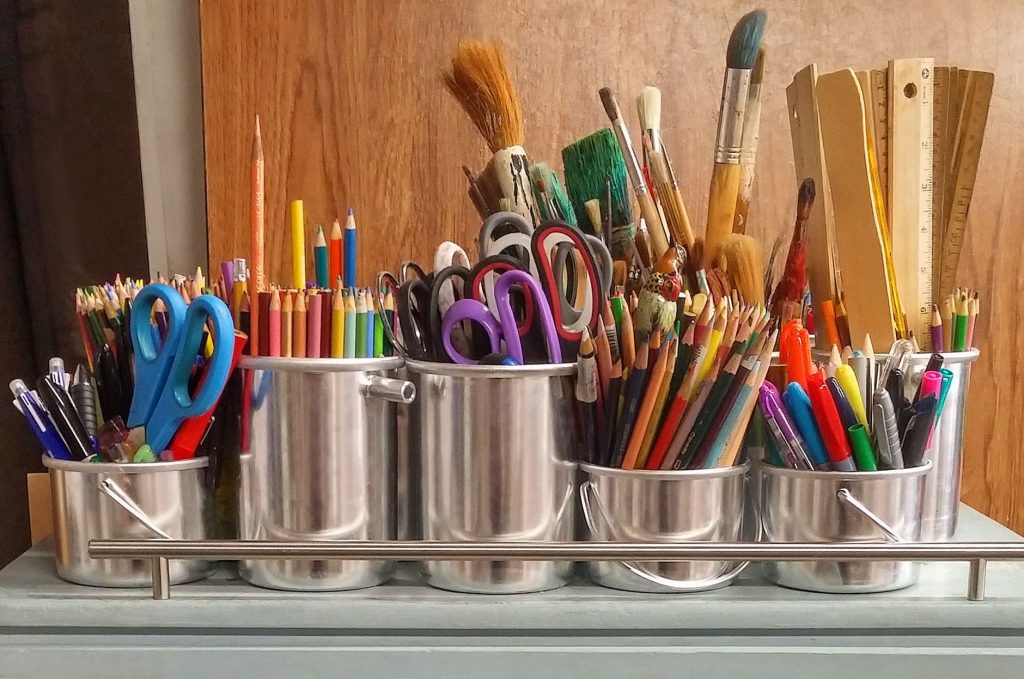People today enjoy producing fine crafts and arts equally as hobbies and professionally. Art supply retailers offer the very important service of boosting the production of artwork in a neighbourhood by making available arts and crafts materials and supplying in-store arts presentations. An art supply retail industry applies each the fundamental essentials of retail sales nonetheless, since it serves a niche market, you need to have a keen interest and understanding of the fundamental background, materials, trends and language of this arts and crafts sector.
Finance the art supply business enterprise. Based on the dimensions of this shop and kind of inventory stocked, the start-up prices may fluctuate. Sources may include private financing or even a business loan from family members and friends or even a commercial creditor like a lender. Ask to establish business accounts with wholesale artwork providers with net-30 or net-60 stipulations, which supplies 30 or even 60 days following receipt of merchandise to cover the seller’s invoice. This company credit provides some bookkeeping and funding flexibility by enabling earnings on goods prior to bill payments are expected. You can seek advice from a small business coach for information on how you should plan your business. Alternatively look for an online coaching business for affordable services.
Boost art supplies know-how. Understanding of art products will be significant in speaking with both wholesale sellers as well as the general public who are your customers. Standard knowledge can be gotten from novels and art guides or by simply taking an introductory conference at a nearby college. You may already have a particular interest in art or be an artist yourself which is the main motivation as to why you want to establish an art supply store.
Locate a retail shop. Search for high traffic areas to get visibility. Beginning the shop near a college with a lively and well-established good arts program can be also a fantastic idea. Also, the availability of suitable parking is also important to clients. Your location could be inside a local shopping centre or perhaps busy shopping road or strip mall. Consider the cost and terms of the lease and whether it is right for you. If you are not familiar with the art industry or need help with real estate, discuss your options with a small business advisors in the area.
Stock the retail shop. Art supply inventory can be purchased in bulk amounts from wholesale providers. Necessary inventory includes popular items such as:
- Pencils such as coloured pencils, graphite led pencils, special sketching pencils
- Erasers
- Pens of different types
- Markers including for children, permanent markers, and artistic markers.
- Assorted paintbrushes of all types and sizes
- Canvases in all sizes
- Sketchbooks and scrapbooks
- Art smocks and aprons
- Easels and stands
- Sculpting clay and plasticine
- Craft supplies such as glitter, sequins, stickers, fabric felt, ribbons, stamps, beads and jewellery making.
- Poster paper and decorative paper
- Artist seats
- Varnishes and primers
Liaise with an association of qualified artwork retailers. For Example, the International Art Materials Trade Association was founded in 1950 by a group of art supply retailers and supplies associates retail info and tools and opportunities to network. Members include manufacturers, distributors, retailers, and importers. These networks can help you acquire better wholesale prices and increase the visibility and trustworthiness of your store. You will also meet like-minded individuals who have a passion for their art business and be able to learn helpful tips and strategic business advice from them.

Provide exceptional and unique services. You could offer free delivery to special local customers who could be restricted such as those living in a retirement home or a senior citizen who is homebound. Partner with local schools or kindergartens to supply art materials to children. Always prioritise customer service and delight your customers every time they visit. Go above and beyond by suggesting products and being friendly to visitors.
Promote the company within the local community via advertising and promotion. This may include advertisements with radio, newspapers, magazines, and magazines. Often distribute fliers and brochures to places such as colleges, summer camps and day care centres, areas in which teachers, pupils, and parents visit regularly. Create a mailing list to ship out press releases for in-store occasions and shop catalogues. These could also include special vouchers or promotions for recipients. Offering a how-to show of art courses and workshops can attract both hobbyist and knowledgeable artists and engaging the community with the power of art. Attend community fairs and events you could even have your own tent or exhibit to sell a small selection of products.